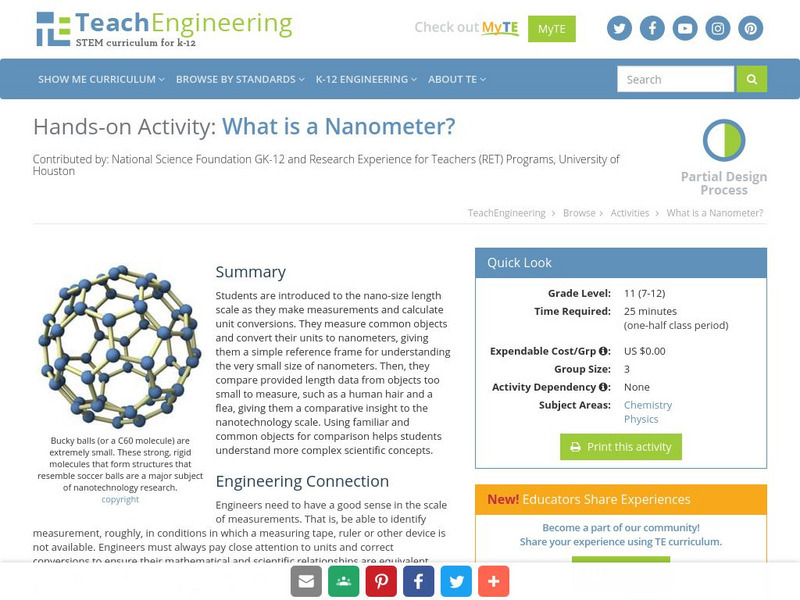Curated OER
Walk a Mile in Albatross Shoes
Students recognize the correlation between the trash they dispose of around their school and the environmental hazards that face wildlife, specifically the Laysan albatross. They determine three ways that they can help the albatross chicks.
Curated OER
Types of Societies
Young scholars compare and contrast the societies of India and the United States by creating a chart. In groups, they give examples of each type of classification. They present their material to the class while identifying the role of...
Curated OER
The Reality of War
High schoolers use research materials developed earlier. They synthesize data to formulate an argument for or against war. Students use their notes to address what the possible answers could be.
Curated OER
Charlotte's Web
Students examine the story, "Charlotte's Web" in the nine lessons of this unit. As the students progress through the book, they will explore the story plot, setting, character, and the value of friendship.
Curated OER
Geography: Snow Cover on the Continents
Young scholars create maps of snow cover for each continent by conducting Internet research. After estimating the percentage of continental snow cover, they present their findings in letters, brochures or Powerpoint presentations.
Curated OER
Visit to Ackland Art Museum (African Masks Exhibit)
Second graders observe and describe the similarities and differences in the African Mask exhibit at the Ackland Art Museum. They use describing words to express the feelings of the masks.
Curated OER
Political Traditions
Students compare and contrast the political institutions in Greece, Rome, and the United States. In groups, they take this information to determine the influences on James Madison when organizing the republic. They develop a chart and...
Curated OER
Comparing Ethnic Groups
Eleventh graders explore the relationship between the United States and the Native Americans from after the Civil War to the early 1900's. They evaluate the actions of the United States towards Native Americans and compare the actions to...
CommonLit
Common Lit: "Let's See What You're Made Of" by Bird Brain Science
This informational, scientific text explains how cells, the smallest unit of a living organism, make up every living thing in the world. As you read, take notes on the comparisons used in the text to explain how cells work. [Free account...
Utah Education Network
Uen: Cell Structures Wee Beasties
In this activity you observe photographs of cells and then make comparisons of the animal and plant cells.
TeachEngineering
Teach Engineering: What Is a Nanometer?
Students are introduced to the nano-size length scale as they make measurements and calculate unit conversions. They measure common objects and convert their units to nanometers, giving them a simple reference frame for understanding the...
Alabama Learning Exchange
Alex: Percents
This lesson explores the making of comparisons by using percents. In this lesson you will compare your class's favorite foods using percents. Middle schoolers will use cooperative groups to answer follow up questions about the...
Alabama Learning Exchange
Alex: Thirsty for Ratios
In this lesson, the young scholars will learn what a ratio is and how it can be used in a comparison. In this lesson, students will also determine how to combine a sports drink in powder form and water to make enough for a whole football...
McREL International
Mc Rel: Glue Polymer (Whelmer #15 Learning Activity)
An easy to do activity that investigates the basic principles behind chemical bonding. The activity is written in lesson plan format that meets NSES standards.














